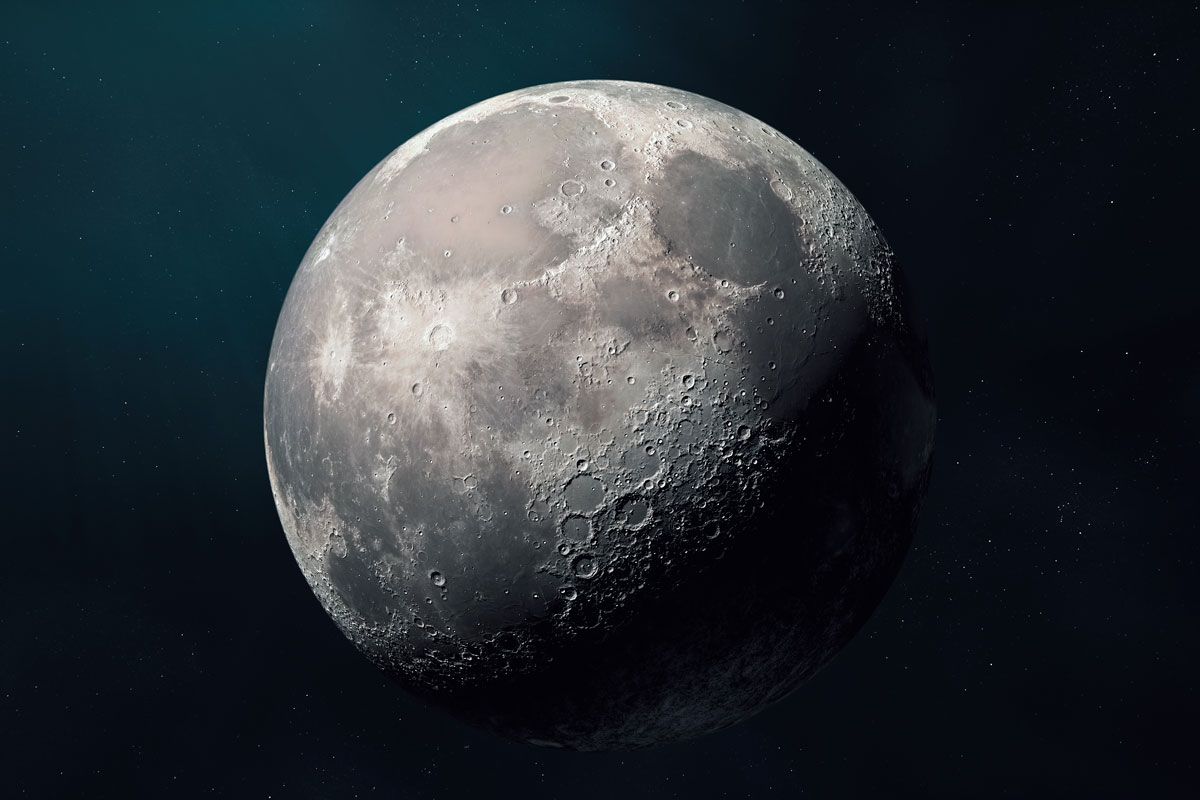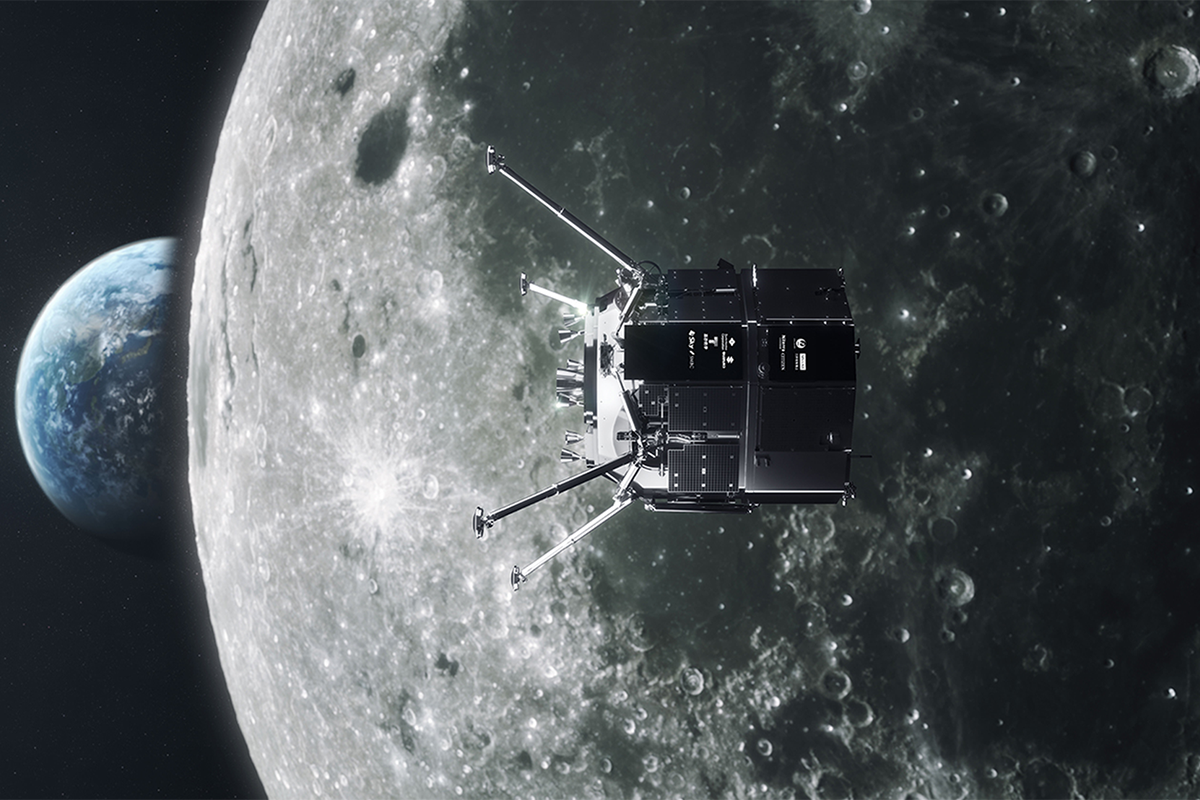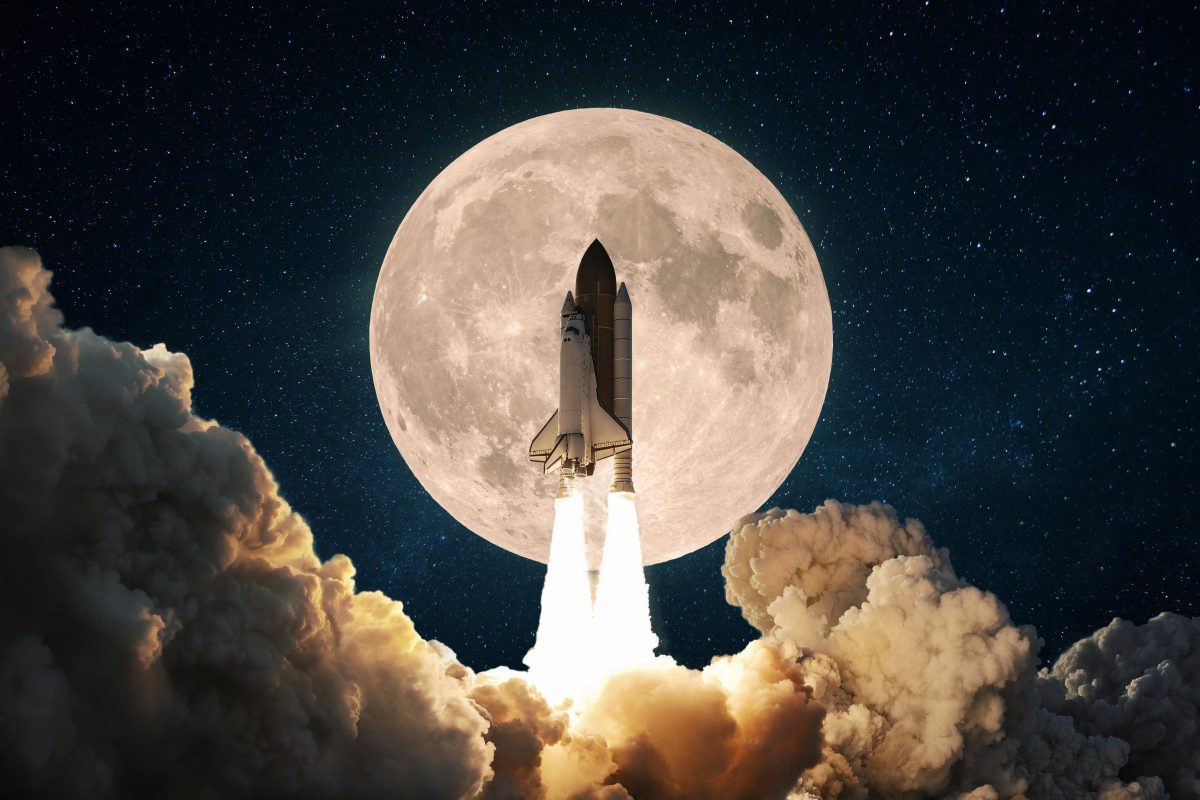NASA’s Space Launch System rocket on a launch pad at Kennedy Space Centre, Florida, on 31 August 2022, ahead of the Artemis I test flight.
Some 15,000 NASA employees were sent home this week following the start of the government shutdown, halting work at much of an agency already grappling with budget cuts and widespread job losses.
But at least one NASA initiative appears to be moving full steam ahead: the Artemis programme.
Aiming to return astronauts to the lunar surface for the first time in five decades, the Artemis programme has been deemed essential work during the government shutdown. The exception came when NASA leadership and a bipartisan group of lawmakers made clear that they consider reaching the Moon before China a national security imperative.
‘China is NOT going to the Moon with good intentions,’ NASA Acting Administrator Sean Duffy said in a social media post last month, before the shutdown. ‘The United States will get there FIRST, preserving peace for both the U.S. and our international partners.’
Technical staff at the Beijing Aerospace Control Centre monitor the docking of the Shenzhou-20 manned spacecraft to the Tiangong space station on 24 April.
A document recently published on NASA’s website shows that more than 3,000 employees will continue to report to work during the government shutdown. That’s 2,000 more people than under a previous shutdown plan that did not include the Artemis exemption.
Much of the ongoing work will revolve around Artemis II, a manned test flight around the Moon that will take off in February.
With four astronauts scheduled to fly on that mission, work on the project ‘is obviously very critical to safety,’ Lakiesha Hawkins, NASA’s acting associate administrator for the Exploration Systems Development Mission Directorate, said during a press conference on 23 September.
‘We anticipate being able to request and proceed with Artemis II in the event of a shutdown,’ Hawkins said at the time.
But the exceptions stipulated in NASA’s shutdown plans this week go even further, allowing work to continue on Artemis III — the historic moon landing mission scheduled for mid-2027 — as well as on Artemis missions expected to fly later this decade or next.
The Artemis programme, with an estimated budget of US$100 billion, far exceeds the budget and ambitious schedule set during President Donald Trump’s first term. One key problem remains: the performance of SpaceX’s Starship, a giant rocket system expected to transport NASA astronauts from their spacecraft to the lunar surface during Artemis III.
Still in the early stages of development, Starship suffered a series of flight failures during testing this year. However, its latest test in August went according to plan, and SpaceX is expected to launch another test flight in mid-October.
A SpaceX Super Heavy rocket carrying the Starship spacecraft lifts off on its tenth test flight at the company’s launch pad at Starbase, Texas, on 26 August.
Cuts to science funding
Job cuts and shifting presidential priorities have affected all NASA centres across the country, but the Artemis programme has stood out.
Congress gave the programme a budgetary lifeline with a $10 billion allocation for manned spaceflight projects, included in Trump’s mega-bill proposal, known as the ‘One Big Beautiful Bill Act’.
However, NASA’s overall budget was a contentious issue even before the government shutdown. Some experts and lawmakers express concern that the agency’s myriad programmes and projects could be headed for irreversible damage.
The White House budget proposed slashing NASA’s science funding by nearly 50% and suggested cutting the agency’s overall budget by 24%. Critics of that plan, including advocates and lawmakers from both parties, have warned that such drastic cuts could prematurely end missions in which NASA has invested billions of dollars and threaten the country’s ability to continue making cutting-edge advances.
Even a former NASA administrator, who served during Trump’s first term, has indicated that he considers science funding to be a crucial part of the space agency’s work: ‘Basic science allowed us to understand time and space in a way we otherwise could not have, and it enables GPS satellites to function,’ former NASA Administrator Jim Bridenstine said during a congressional hearing last month.

‘Unnecessary disruptions and uncertainty’
Separate bills passed by the US House of Representatives and Senate have rejected the White House’s proposed cuts, opting to keep science funding levels unchanged or with minimal reductions.
‘The House of Representatives and the Senate have responded with a “no”,’ said Jack Kiraly, director of government relations for the Planetary Society, a non-profit organisation dedicated to space exploration, during a budget briefing last month. ‘We want to continue to lead the world.’
But without a funding bill ready for passage by both chambers, some lawmakers are concerned that the White House Office of Management and Budget (OMB), which is in charge of enforcing budget priorities across federal agencies, may move forward.
However, without a funding bill ready for passage in both chambers, some lawmakers fear that the OMB, which is responsible for enforcing budget priorities across federal agencies, may press ahead with its attempts to implement more drastic cuts.
A group of eight Democrats and Republicans sent a letter to the leaders of the House Appropriations Committee last month requesting that any interim measure to fund the government include explicit language to protect NASA.
‘The OMB apparently intends to implement the President’s Budget Request (PBR) on 1 October, regardless of this clear intent by Congress’ to restore funding, the letter said. ‘For an agency like NASA, a budget disruption of this magnitude would be devastating.’
Lawmakers specified NASA science projects that would be cancelled mid-mission if the PBR were enacted, including 20 robotic science missions already operating throughout the solar system.
‘These, taken together, reflect an estimated prior investment of £12 billion from taxpayers, not including annual operating costs,’ the letter states. And once deactivated, they cannot be easily restored, if at all. These mission terminations would also generate significant closure costs that would place an additional burden on the taxpayer.
NASA projects involve complex hardware and long-term mission planning, the lawmakers noted. Consistent funding over long periods can be essential for the agency, and the proposed cuts represent ‘unnecessary disruptions and uncertainty,’ according to their letter.
When contacted for comment, a NASA official said the agency is planning for ‘all budget scenarios,’ taking into account the funding levels separately approved by the White House, the House of Representatives and the Senate.
Workers at several NASA facilities who spoke to CNN said the uncertainty has created a frustrating information vacuum for employees.
‘Between people leaving and the fact that we don’t know what budget we’re working with, no one knows what’s going on,’ said one employee, who requested anonymity for fear of reprisals.

‘Extremely chaotic’
Amid the stalemate over the federal budget, the White House has threatened mass layoffs of federal employees and suggested suspending billions of dollars in public funding.
If the Trump administration follows through on these threats, it is unclear whether NASA will be able to avoid the consequences. The agency, concerned about the loss of incoming talent, managed to avoid a blanket decree issued by the administration earlier this year by laying off a large number of probationary employees.
However, job losses have still affected NASA. Approximately 4,000 employees chose to accept deferred resignation offers from the administration, for example, reducing the agency’s workforce by more than 20%.
A NASA employee at the Johnson Space Centre in Houston, who spoke to CNN on condition of anonymity, said that among the lost workers are top-tier talent, including key individuals who have worked on projects related to NASA’s moon landing programme.
Despite Duffy’s determination to ramp up plans to develop a nuclear reactor to generate power on the moon, for example, the source said NASA has lost at least one of its top experts on power systems.
More broadly, advocates have expressed concern that the OMB and its director, Russell Vought, may take advantage of the lack of legislative direction to implement devastating changes at the space agency.
‘I’ve been calling (Vought) “Lex Luthor of the dollar store,”’ Kiraly said, referring to Superman’s longtime nemesis. ‘He’s someone who historically hasn’t seen much value in space science.’
In its updated guidance for the shutdown, NASA also included language stating that ‘research activities (i.e., grants)’ will only be funded if they are ‘aligned with presidential priorities,’ leaving ample room for interpretation as to which projects might be on the chopping block.
‘The situation at NASA is extremely chaotic,’ another engineer at the Goddard Space Flight Centre in Maryland, who spoke to CNN on condition of anonymity because he was not authorised to speak to the press, said. ‘The closure of facilities and buildings, the crackdown on unions… along with the consequences (of deferred resignations) make it difficult for anyone to do any real work.’





